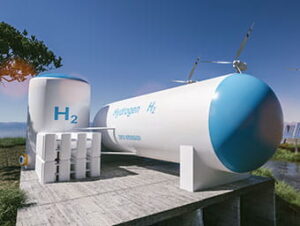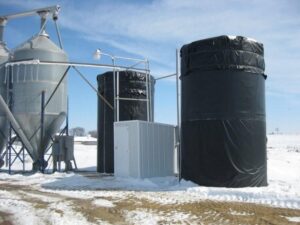Thermostats play a crucial role in regulating home heating systems, ensuring comfort and energy efficiency. At their core, Thermostats are devices designed to maintain a set temperature by controlling the operation of heating and cooling systems. Understanding how these devices work and their basic components can help homeowners make informed decisions about their heating needs.Visit our SVR Trace to see the best cost efficient products.
A thermostat functions as a control unit for your home’s heating system. Thermostats senses the ambient temperature and compares it to a desired setpoint. When the temperature deviates from this setpoint, the thermostat signals the heating system to turn on or off to bring the temperature back to the desired level. This process ensures that the home remains at a comfortable temperature without wasting energy. Check our shop for the best heating cables and order now!
There are three primary types of Thermostats: analog, digital, and smart. Analog Thermostats, also known as mechanical Thermostats, are the most basic type and use a bi-metallic strip or a mercury switch to control the temperature. These Thermostats work by expanding and contracting a bi-metallic strip in response to temperature changes. As the strip bends, it makes or breaks an electrical connection that controls the heating system. While simple and reliable, analog Thermostats are less precise and less efficient compared to their modern counterparts. Contact us for more data!
Digital Thermostats offer greater accuracy and feature a digital display, making it easier to set and read the temperature. These Thermostats use electronic sensors to measure the room temperature and often include programmable settings, allowing users to set different temperatures for different times of the day. This programmability enables better energy management, as the heating system can be turned down when the home is unoccupied or during the night when lower temperatures are acceptable.
Smart Thermostats represent the latest advancement in thermostat technology. These devices connect to the home’s Wi-Fi network, allowing users to control the temperature remotely via a smartphone app. Smart Thermostats learn user preferences and schedules, optimizing heating patterns to maximize comfort and efficiency. They use advanced algorithms and sensors to detect when people are home and adjust the heating accordingly. Additionally, many smart Thermostats can provide energy usage reports, helping homeowners understand their consumption patterns and identify opportunities for savings.
The benefits of using a Thermostats extend beyond convenience. By learning your habits and adjusting the temperature accordingly, smart Thermostats can significantly reduce energy consumption, leading to lower utility bills and a reduced environmental impact. For instance, some models can integrate with weather forecasts to preemptively adjust heating settings based on anticipated changes in outdoor temperatures. Others can interact with smart home systems like Amazon Alexa or Google Assistant, enabling voice control and further automation.
Despite the advanced features of modern Thermostats, installation and maintenance are typically straightforward. For digital and smart Thermostats, it is often as simple as replacing an old unit and connecting the new one to the existing wiring. However, professional installation is recommended to ensure that the thermostat is correctly wired and configured. Regular maintenance includes checking the thermostat’s batteries, ensuring that it is clean and dust-free, and verifying that it is functioning correctly.
In summary, understanding the basics of Thermostats is essential for effectively managing home heating. Whether you opt for a traditional analog model, a more precise digital thermostat, or a cutting-edge smart thermostat, these devices play a vital role in maintaining a comfortable and energy-efficient home environment. With advancements in technology, Thermostats are becoming more user-friendly and capable, offering homeowners unprecedented control over their heating systems. Investing in a good thermostat can lead to significant energy savings, enhanced comfort, and a smarter home overall. Visit our blog page for the newest content about industrial products and household products in the field of the radiant floor heating cables!
- How does Installation and Maintenance of Home Thermostats work?
- How Thermostats Control Home Heating Systems?
- What are the Types of Thermostats?
- What are the Benefits of Smart Thermostats?
- What are the Energy Savings and Environmental Impact?
- What are the Future Trends in Thermostat Technology?
- What is Thermostat Placement?
- What is The Role of Thermostats in Zonal Heating Systems?
These are the questions that will be answered in this article. So lets continue!
Table
- Installation and Maintenance of Home Thermostats
- Thermostats Control Home Heating Systems
- Types of Thermostats
- Benefits of Smart Thermostats
- Energy Savings and Environmental Impact
- Future Trends in Thermostat Technology
- Thermostat Placement
- The Role of Thermostats in Zonal Heating Systems
- FAQs
- Conclusion
How Thermostats Control Home Heating Systems
Thermostats are pivotal components, playing a key role in regulating indoor temperatures and ensuring both comfort and energy efficiency. By understanding how Thermostats control home heating systems, homeowners can optimize their heating, reduce energy consumption, and maintain a pleasant living environment.
At its core, a thermostat is a sensor and a switch combined into one device. It senses the current ambient temperature and compares it to a preset desired temperature, known as the setpoint. When the ambient temperature falls below or rises above this setpoint, the thermostat activates or deactivates the heating system accordingly. This automatic regulation maintains a consistent indoor climate without manual intervention. (Cost efficiency matters!)
The basic operation of thermostat involves several components: a temperature sensor, a control unit, and a relay switch. The temperature sensor, typically a thermistor or a bi-metallic strip, measures the current air temperature. The control unit processes this information and compares it to the setpoint. If the temperature is lower than the setpoint, the thermostat sends a signal to the relay switch, which then activates the heating system. Conversely, if the temperature exceeds the setpoint, the thermostat signals the relay to turn off the heating system.
Different types of Thermostats control home heating systems with varying degrees of sophistication. Analog Thermostats, the simplest type, use mechanical components like bi-metallic strips or mercury radiant underfloor heating switches. As the ambient temperature changes, the bi-metallic strip bends, making or breaking an electrical connection that controls the heating system. While reliable, these lack the precision and programmability of modern digital and smart Thermostats.
Digital Thermostats improve upon analog designs by incorporating electronic sensors and digital displays. These Thermostats offer more precise temperature control and programmable settings, allowing users to set different temperatures for different times of the day. For example, a digital thermostat can be programmed to lower the temperature at night when the household is asleep and raise it in the morning before everyone wakes up. This capability helps optimize energy use, as the heating system operates less frequently when higher temperatures are unnecessary.
Smart Thermostats represent the latest advancement in thermostat technology, offering even greater control and energy efficiency. These devices connect to the home’s Wi-Fi network, enabling remote access via smartphone apps. Smart learn the household’s schedule and preferences over time, automatically adjusting the temperature to maximize comfort and efficiency. They use advanced algorithms and sensors to detect occupancy and adapt heating patterns accordingly.
In addition to basic temperature regulation, Thermostats can integrate with other smart home devices and systems. For instance, they can receive weather forecasts and adjust heating settings preemptively based on expected temperature changes. Some models also provide detailed energy usage reports, helping homeowners identify patterns and opportunities for savings. Voice control through digital assistants like Amazon Alexa or Google Assistant further enhances their convenience.
The integration of Thermostats with home heating systems also involves various types of heating equipment, including furnaces, boilers, heat pumps, and radiant heating systems. The thermostat sends signals to these systems, instructing them when to start or stop heating. For instance, in a forced-air heating system, the thermostat controls the furnace and blower fan, ensuring warm air is distributed throughout the home when needed. In a radiant heating system, the thermostat manages the flow of hot water or electricity to the radiators or heating panels.
Proper installation and maintenance of Thermostats are crucial for their effective operation. Digital and smart Thermostats typically require professional installation to ensure correct wiring and configuration. Regular maintenance includes checking batteries, cleaning the unit, and verifying that the thermostat is accurately sensing and controlling the temperature.
In conclusion, these are essential for controlling home heating systems, offering a range of functionalities from basic temperature regulation to advanced energy-saving features. By choosing the right thermostat and understanding how it operates, homeowners can enhance comfort, reduce energy consumption, and maintain an efficient heating system.
Types of Thermostats: Analog, Digital, and Smart
Thermostats are integral to home heating systems, ensuring indoor comfort and energy efficiency. They come in various types, each with unique features and capabilities. Understanding the differences between analog, digital, and smart Thermostats can help homeowners select the best option for their needs. Health benefits of underfloor heating .
Analog Thermostats
Analog Thermostats, also known as mechanical Thermostats, are the most basic type. They use simple mechanical components to regulate temperature. The most common design involves a bi-metallic strip, which consists of two different metals bonded together. As the temperature changes, the metals expand and contract at different rates, causing the strip to bend. This bending action makes or breaks an electrical connection, turning the heating system on or off.
Another type of analog thermostat uses a mercury switch. Inside a glass tube, a small amount of mercury moves in response to temperature changes, completing or breaking an electrical circuit. While effective, mercury Thermostats are becoming less common due to environmental concerns over mercury disposal.
Analog Thermostats are known for their simplicity and durability. However, they lack the precision and advanced features of modern Thermostats. Temperature settings are adjusted manually, and there are no programmable options, making it difficult to optimize energy use.
Digital Thermostats
Digital Thermostats represent a significant advancement over analog models. They use electronic sensors to measure the ambient temperature accurately and feature a digital display for easy reading and adjustment. The most significant benefit of digital Thermostats is their programmability. Our new products: (underfloor heating straps, underfloor heating film)
Users can set different temperatures for various times of the day or days of the week. For instance, a digital thermostat can be programmed to lower the temperature at night or when the house is unoccupied and raise it during the morning or evening when people are home. This programmability enhances energy efficiency and can lead to significant cost savings.
Digital Thermostats also offer features such as backlit displays, touchscreens, and battery backup. Some models include diagnostic functions to alert homeowners to potential issues with their heating systems. Despite their advanced features, digital Thermostats are generally easy to install and use, making them a popular choice for many homeowners.
Benefits of Smart Thermostats: Efficiency and Convenience
Smart Thermostats are the latest innovation in thermostat technology, offering unparalleled control and efficiency. These devices connect to a home’s Wi-Fi network, allowing users to control the temperature remotely via smartphone apps. This remote access is particularly beneficial for adjusting settings while away from home, ensuring comfort upon return.
One of the key features of smart Thermostats is their ability to learn user preferences and schedules. Using advanced algorithms, they adapt to the household’s routine, automatically adjusting the temperature to optimize comfort and energy use. For example, they can lower the temperature when the house is empty and raise it when occupants are expected to return.
Smart Thermostats also integrate with other smart home systems and devices. They can interact with voice-activated assistants like Amazon Alexa or Google Assistant, enabling voice control. Some models can even use geofencing technology to detect when residents are approaching home and adjust the temperature accordingly improving home heating industry.
Additionally, smart Thermostats often provide detailed energy usage reports. These insights help homeowners understand their consumption patterns and identify ways to save energy. Features like adaptive recovery ensure that the home reaches the desired temperature by the scheduled time, learning how long the heating system needs to achieve this.
While smart Thermostats offer numerous advantages, they typically require a more complex installation process, often necessitating professional assistance. However, the long-term benefits in terms of energy savings and convenience can outweigh the initial setup costs.
In conclusion, Thermostats have evolved significantly from basic analog models to sophisticated smart devices. Analog Thermostats offer simplicity and reliability but lack precision and programmability. Digital Thermostats provide greater accuracy and programmability, enhancing energy efficiency. Smart Thermostats deliver the highest level of control, learning user habits, and integrating with other smart home technologies for optimal comfort and energy management. By understanding the features and benefits of each type, homeowners can make informed decisions to suit their specific heating needs.
Installation and Maintenance of Home Thermostats
Installing and maintaining a home thermostat is crucial for ensuring efficient operation of heating systems and maintaining indoor comfort. Proper installation ensures that the Thermostats functions correctly, while regular maintenance helps in sustaining its performance and longevity. This guide outlines the key steps and considerations for installing and maintaining analog, digital, and smart Thermostats.
Preparation and Safety
Before starting the installation process, it’s essential to turn off the power to your heating system at the breaker box to prevent any electrical hazards. Gather all necessary tools, such as screwdrivers, a drill, a level, and wire strippers. Read the thermostat’s instruction manual thoroughly to understand specific requirements. Related blog: Oil and gas industry and underfloor heating.
Removing the Old Thermostat
1. Turn Off the Power: Ensure that the power to your heating system is turned off.
2. Remove the Cover: Take off the cover of the old thermostat.
3. Label the Wires: Label each wire connected to the old thermostat using masking tape or stickers to ensure correct reconnection. Most Thermostats use standard color codes (e.g., red for power, white for heat).
4. Disconnect the Wires: Carefully disconnect the wires and remove the mounting plate of the old thermostat from the wall.
Installing the New Thermostat
1. Mount the New Plate: Attach the new mounting plate to the wall using screws. Use a level to ensure it is straight.
2. Connect the Wires: Reconnect the wires to the corresponding terminals on the new thermostat. Follow the labels or color codes to avoid confusion.
3. Attach the Thermostat Unit: Snap the new thermostat unit onto the mounting plate.
4. Restore Power: Turn the power back on at the breaker box and check the thermostat’s display to ensure it is receiving power.
Programming and Testing
For digital and smart Thermostats, follow the manufacturer’s instructions to program the desired settings. Test the thermostat by setting it to a temperature above the current room temperature to ensure the heating system activates.
Maintenance of Home Thermostats
Regular maintenance of Thermostats is essential for optimal performance and energy efficiency and sustainability. Here are key maintenance tasks:
Cleaning
Dirt and dust can interfere with the thermostat’s sensors and switches. Periodically remove the cover and gently clean the interior with a soft brush or compressed air. For digital and smart Thermostats, ensure the screen and buttons are clean and responsive.
Battery Replacement
Many digital and smart Thermostats use batteries as a power source or backup. Check the battery level regularly and replace batteries as needed to prevent interruptions in operation. Most Thermostats will display a low-battery warning.
Calibration
Over time, Thermostats can drift from their setpoints. Use a separate, accurate thermometer to compare the thermostat’s reading with the actual room temperature. If there is a significant discrepancy, recalibrate the thermostat according to the manufacturer’s instructions.
Software Updates
For smart Thermostats, keeping the software up to date is crucial for security and functionality. Manufacturers periodically release updates that can enhance performance or add new features. Check for updates through the thermostat’s app or website and install them as recommended.
Inspection of Wiring and Connections
Inspect the thermostat’s wiring and connections annually. Look for any signs of wear, corrosion, or loose connections. Tighten any loose wires and replace damaged ones to ensure a reliable connection.
Seasonal Adjustments
Adjust the thermostat settings seasonally to account for changes in temperature and occupancy patterns. For example, set a lower temperature during winter nights and a higher temperature during summer days to maximize energy savings.
Professional Inspection
If you encounter persistent issues or if the thermostat is not functioning correctly after maintenance, consider hiring a professional HVAC technician for a thorough inspection. Professionals can diagnose and resolve complex problems that might be beyond basic troubleshooting.
In conclusion, proper installation and regular maintenance of home Thermostats are vital for ensuring efficient operation and extending the lifespan of your heating system. By following these guidelines, homeowners can enjoy optimal indoor comfort and energy savings.
Energy Savings and Environmental Impact
Thermostats play a critical role in managing home energy consumption, significantly influencing both energy savings and environmental impact. By effectively controlling heating and cooling systems, Thermostats help reduce energy use, lower utility bills, and minimize the carbon footprint of households. Understanding how different types of Thermostats contribute to energy efficiency and environmental sustainability is crucial for making informed decisions about home heating systems.
Programmable Thermostats
Programmable Thermostats offer a simple yet powerful way to reduce energy consumption. By allowing homeowners to set different temperatures for various times of the day, these Thermostats ensure that the heating system operates only when needed. For example, a programmable thermostat can lower the temperature during the night or when the house is unoccupied, and raise it just before the occupants wake up or return home. This targeted heating approach prevents unnecessary energy use, leading to significant savings. According to the U.S. Department of Energy, using a programmable thermostat can save homeowners up to 10% annually on heating and cooling costs.
Smart Thermostats
Smart Thermostats take energy savings to the next level with advanced features such as learning algorithms, occupancy sensors, and remote access. These devices learn the household’s schedule and preferences over time, automatically adjusting the temperature to optimize comfort and efficiency. For instance, a smart thermostat can detect when the house is empty and lower the temperature accordingly, then raise it when occupants are on their way home. Additionally, remote access via smartphone apps allows users to adjust settings from anywhere, ensuring that the heating system is only active when necessary. A brief history of home heating.
Smart Thermostats also provide detailed energy usage reports, helping homeowners understand their consumption patterns and identify areas for improvement. Some models integrate with weather forecasts to preemptively adjust settings based on expected temperature changes, further enhancing energy efficiency. These capabilities can lead to even greater savings compared to programmable Thermostats, with some studies showing reductions in heating and cooling costs of up to 15%.
Environmental Impact
Reducing energy consumption through efficient thermostat use not only saves money but also has a positive impact on the environment. Heating and cooling account for a significant portion of household energy use, and by optimizing these systems, homeowners can significantly reduce their carbon footprint. Lower energy use means less demand for electricity and natural gas, leading to reduced greenhouse gas emissions from power plants and reduced depletion of natural resources.
Reduction in Greenhouse Gas Emissions
The burning of fossil fuels for heating contributes to greenhouse gas emissions, which are a major driver of climate change. By using Thermostats to regulate and reduce heating demand, households can decrease their reliance on fossil fuels. This reduction translates into fewer carbon dioxide (CO2) emissions. For example, if every household in the United States used a programmable or smart thermostat to reduce heating by just a few degrees, the collective reduction in CO2 emissions would be substantial.
Energy Efficiency and Renewable Energy Integration
Efficient use of Thermostats can also facilitate the integration of renewable energy sources. By lowering overall energy demand, households can make better use of renewable energy systems such as solar panels and wind turbines. During periods of high renewable energy production, smart Thermostats can adjust heating settings to take advantage of the available clean energy, thereby reducing the need for fossil fuel-based power.
Sustainable Living
Using Thermostats to manage home heating systems aligns with broader goals of sustainable living. It encourages mindful energy consumption and fosters an awareness of environmental impact. Additionally, the adoption of smart Thermostats can be a step towards a more comprehensive smart home ecosystem, where various devices work together to optimize energy use and enhance sustainability. Self regulating heating cables are helpful too!
In conclusion, Thermostats are essential tools for achieving energy savings and reducing environmental impact. Programmable and smart Thermostats, in particular, offer advanced features that enhance efficiency and contribute to significant reductions in energy consumption and greenhouse gas emissions. By integrating these technologies into home heating systems, homeowners can enjoy lower utility bills, increased comfort, and a more sustainable lifestyle.
Future Trends in Thermostat Technology
The evolution of thermostat technology continues to progress at an impressive pace, driven by advancements in artificial intelligence, connectivity, and user-centric design. As smart home technology becomes increasingly prevalent, Thermostats are evolving to offer greater efficiency, enhanced user experiences, and deeper integration with other smart devices. Here are some key future trends in thermostat technology that are set to redefine how we manage home heating and cooling.
Advanced AI and Machine Learning
One of the most exciting trends in thermostat technology is the integration of advanced artificial intelligence (AI) and machine learning algorithms. Future thermostat will be able to learn more accurately from user behavior and environmental data, predicting heating and cooling needs with greater precision. These systems will not only respond to immediate changes but also anticipate future needs based on patterns and preferences, optimizing energy use proactively. For instance, if a thermostat learns that the household tends to return home earlier on Fridays, it can adjust the heating schedule accordingly without manual input. Hazard zones in the underfloor heating industry.
Enhanced Connectivity and Integration
The rise of the Internet of Things (IoT) is driving enhanced connectivity in thermostat technology. Future Thermostats will be more seamlessly integrated with a wide array of smart home devices, from lighting systems to security cameras. This integration will allow for coordinated actions across multiple devices to create more comprehensive and efficient home automation ecosystems. For example, a thermostat could work with smart blinds to manage indoor temperatures more effectively by adjusting sunlight exposure based on time of day and current weather conditions.
Voice and Gesture Control
Voice control has already begun to make its mark with current smart Thermostats, but the future will see even more sophisticated voice and gesture control capabilities. Enhanced natural language processing will allow Thermostats to understand and execute more complex commands and respond to a broader range of voices and accents. Gesture control, though in its infancy, will enable users to adjust settings with simple hand movements, providing a convenient and touch-free way to manage home climates.
Improved Energy Insights and Recommendations
Future thermostat will provide even more detailed energy insights, helping homeowners understand their energy consumption patterns and offering personalized recommendations to enhance efficiency. These devices will analyze data from various sources, including historical usage, weather forecasts, and occupancy patterns, to provide actionable advice. Users might receive notifications suggesting minor adjustments that could lead to significant energy savings, such as lowering the temperature by a degree or adjusting the heating schedule.
Smart Grid Integration
As energy systems modernize, Thermostats will play a critical role in integrating with smart grids. Future Thermostats will be able to communicate with utility companies and adjust settings based on grid demands, helping to balance energy loads and prevent blackouts. During peak demand periods, Thermostats could temporarily lower heating or cooling to reduce strain on the grid, often in exchange for financial incentives. This two-way communication will make energy consumption more dynamic and responsive, promoting overall grid stability and efficiency.
Sustainability and Eco-Friendly Features
Sustainability will be a driving force in the development of future thermostat technology. Manufacturers are focusing on creating eco-friendly products that not only improve energy efficiency but also reduce environmental impact. Future Thermostats will be designed with recyclable materials and energy-efficient components. Additionally, enhanced integration with renewable energy sources like solar and wind power will enable Thermostats to optimize energy use based on the availability of green energy, further reducing reliance on fossil fuels. The constant wattage heating cables are good too.
Enhanced Security and Privacy
With the increasing connectivity of smart devices, security and privacy concerns are paramount. Future Thermostats will incorporate advanced security features to protect against cyber threats and unauthorized access. Enhanced encryption protocols and regular software updates will ensure that personal data and home systems remain secure. Additionally, more transparent data privacy policies will help users understand how their information is used and give them greater control over their data.
In conclusion, the future of thermostat technology promises significant advancements that will enhance energy efficiency, user experience, and integration with smart home ecosystems. Through the incorporation of advanced AI, improved connectivity, and sustainable design, Thermostats will become more intelligent and capable, playing a vital role in the evolution of smart homes and sustainable living. As these technologies continue to develop, homeowners can look forward to more intuitive, efficient, and secure ways to manage their home environments.
Thermostat Placement: Maximizing Efficiency and Comfort
Proper thermostat placement is essential for maximizing both energy efficiency and comfort in your home. A thermostat’s location can significantly influence its ability to accurately read the ambient temperature and control the heating system effectively. By strategically placing the thermostat, homeowners can ensure that their heating systems operate efficiently, maintain consistent indoor temperatures, and avoid unnecessary energy consumption.(heat tracing cables)
Importance of Proper Thermostat Placement
Thermostats work by sensing the temperature of the surrounding air and activating the heating system to maintain the set temperature. If a thermostat is placed in an inappropriate location, it can give inaccurate readings, leading to inefficient heating. For instance, a thermostat placed in a particularly sunny area might sense a higher temperature than the rest of the house, causing the heating system to remain off while other rooms remain cold. Conversely, a thermostat in a drafty or unusually cold spot might overheat the home, wasting energy and money.
Optimal Locations for Thermostats
1. Central Location: The best place for a thermostat is in a central location within the home. This ensures that it gets an average reading of the home’s overall temperature. Ideally, it should be located on an interior wall in a frequently used room, such as the living room or hallway.
2. Eye-Level Placement: Installing the thermostat at eye level, typically around 5 feet off the ground, ensures it measures the air temperature accurately. This height avoids the influence of warmer air that rises to the ceiling and cooler air that settles near the floor.
3. Away from Heat Sources: Keep the thermostat away from direct sunlight, lamps, appliances, and other heat sources. These can cause the thermostat to register a higher temperature than the actual room temperature, leading to insufficient heating.
4. Avoid Drafty Areas: Avoid placing the thermostat near windows, doors, or drafty areas. Cold drafts can cause the thermostat to think the house is cooler than it is, prompting unnecessary heating cycles.
5. Open Spaces: Position the thermostat in an open area where air flows freely. Avoid placing it behind furniture, curtains, or in tight corners, as restricted airflow can lead to inaccurate temperature readings.
Impact of Improper Thermostat Placement
Improper thermostat placement can lead to several issues, including uneven heating, higher energy bills, and increased wear and tear on the heating system. For example, if the thermostat is in a cold hallway, the system might run longer than necessary to heat the rest of the house, leading to excessive energy use and increased costs. In contrast, a thermostat in a warm spot might short-cycle the heating system, causing it to turn on and off frequently, which can wear out components faster.
Tips for Improving Thermostat Placement
1. Consult Professionals: If unsure about the best location for your thermostat, consult a professional HVAC technician. They can assess your home’s layout and recommend the optimal placement.
2. Use Smart Thermostats with Remote Sensors: Smart Thermostats with remote sensors can help mitigate placement issues. These sensors can be placed in different rooms, providing a more accurate overall temperature reading and enabling better temperature control throughout the home.
3. Periodic Checkups: Periodically check the thermostat’s location to ensure it remains ideal. Changes in home layout or usage patterns might necessitate repositioning the thermostat for better performance.
4. Consider Zoning: For larger homes, consider a zoning system with multiple Thermostats. This allows different areas of the home to be heated independently, ensuring better comfort and efficiency. This also useful in household underfloor heating.
Conclusion
Proper thermostat placement is crucial for maximizing the efficiency and comfort of your home heating system. By strategically locating the thermostat in a central, open, and draft-free area away from direct heat sources, homeowners can ensure accurate temperature readings and optimal heating performance. Consulting with HVAC professionals and considering advanced thermostat technologies can further enhance heating efficiency, leading to lower energy bills and a more comfortable living environment.
The Role of Thermostats in Zonal Heating Systems
Zonal heating systems offer a sophisticated approach to home heating by allowing different areas, or zones, of a house to be heated independently. This method of heating not only enhances comfort but also improves energy efficiency. Central to the functionality of zonal heating systems is the use of Thermostats, which control the temperature in each zone. Understanding the role of Thermostats in these systems can help homeowners optimize their heating strategies and reduce energy consumption.
What is Zonal Heating?
Zonal heating divides a home into multiple zones, each of which can be heated independently of the others. This division is typically based on the natural divisions of the home, such as bedrooms, living areas, and basements. Each zone is equipped with its own thermostat and heating control mechanism, which could be dampers in the ductwork for forced-air systems, individual heaters for electric systems, or separate loops for hydronic underfloor systems. open space heating.
How Thermostats Control Zonal Heating Systems
In a zonal heating system, Thermostats are the primary control units that regulate the temperature of each zone. Here’s how they function:
1. Independent Temperature Control: Each zone in a zonal heating system has its own thermostat. This allows residents to set different temperatures for different areas according to their preferences and usage patterns. For example, the thermostat in the living room can be set to a warmer temperature during the day when the area is in use, while bedrooms can be kept cooler until nighttime.
2. Signal Activation: The Thermostats send signals to the heating system to activate or deactivate based on the set temperature for each zone. When the temperature in a zone drops below the setpoint, the thermostat triggers the heating unit or opens the damper to allow warm air to flow into that zone. Conversely, when the desired temperature is reached, the thermostat shuts off the heating supply to that zone.
3. Energy Efficiency: By heating only the areas that are in use and reducing the heating in unoccupied zones, Thermostats in a zonal heating system significantly improve energy efficiency. This targeted heating approach minimizes energy wastage, as the system does not heat the entire house unnecessarily.
4. Enhanced Comfort: Thermostats in zonal systems enhance comfort by allowing personalized temperature settings for different areas. Family members can adjust their respective zones to their comfort levels, eliminating disputes over a single household temperature setting.
Types of Thermostats for Zonal Heating
1. Programmable Thermostats: These allow users to set schedules for different times of the day. For example, the thermostat in a home office can be set to a higher temperature during working hours and lowered afterward. Check out drain line heating cables.
2. Smart Thermostats: These offer advanced features such as learning user preferences, remote access via smartphone apps, and integration with other smart home devices. Smart Thermostats can optimize heating patterns based on occupancy and even weather forecasts.
3. Digital Thermostats: These provide precise temperature control and are often more user-friendly than traditional analog models. They are suitable for homeowners who need basic but reliable temperature control without advanced features.
Installation and Maintenance Considerations
Installing these heating units for a zonal heating system requires careful planning and professional expertise. Proper placement of each thermostat is crucial for accurate temperature readings and efficient operation. Thermostats should be located away from direct sunlight, drafts, and heat sources to avoid false readings.
Regular maintenance of both the Thermostats and the heating system is essential to ensure optimal performance. This includes checking battery levels, cleaning the units, and ensuring that all connections and signals between these and the heating units are functioning correctly.
FAQs
1. What is the main function of a thermostat in a home heating system?
A thermostat regulates the temperature in a home by controlling the heating system. It maintains the desired temperature by turning the heating system on or off based on the ambient temperature.
2. What are the differences between analog, digital, and smart thermostats?
Analog Thermostats use mechanical components to control temperature, digital Thermostats use electronic sensors and offer programmable settings, and smart ones include advanced features like learning algorithms, remote access, and integration with smart home devices. Check out heating cable with inactive copper.
3. How can thermostat placement affect home heating efficiency?
Proper thermostat placement is crucial for accurate temperature readings. A thermostat should be placed in a central location, away from direct sunlight, drafts, and heat sources to ensure efficient and effective heating.
4. What is zonal heating and how do thermostats control it?
Zonal heating divides a home into different areas that can be heated independently. Each zone has its own thermostat, allowing for personalized temperature settings and more efficient heating by targeting only the areas that need warmth.
5. How do smart thermostats save energy?
Smart Thermostats save energy by learning user preferences, optimizing heating schedules based on occupancy, and providing remote control via smartphone apps. They can also integrate with other smart home systems to further enhance energy efficiency.
6. Can I install a thermostat myself, or do I need a professional?
While some of these can be installed by homeowners with basic electrical knowledge, it’s often recommended to hire a professional, especially for complex systems like zonal heating or when dealing with high-voltage systems, to ensure proper installation and safety.
7. What maintenance is required for thermostats?
Regular maintenance includes cleaning the unit, replacing batteries, ensuring proper placement, checking and updating software for smart Thermostats, and inspecting wiring and connections to prevent malfunctions and ensure accurate temperature control.
8. How do thermostats contribute to reducing environmental impact?
These reduce environmental impact by optimizing heating schedules, minimizing energy wastage, and lowering overall energy consumption. Efficient thermostat use can significantly reduce greenhouse gas emissions associated with home heating.
Conclusion
Thermostats play a pivotal role in the operation of zonal heating systems, providing the ability to independently control the temperature in different areas of a home. This not only enhances comfort by accommodating individual preferences but also significantly improves energy efficiency by reducing the heating of unused spaces. By understanding and properly managing the thermostat in a zonal heating system, homeowners can achieve a more comfortable living environment while also reducing their energy bills and environmental footprint.







